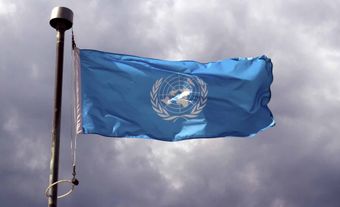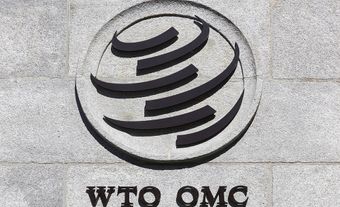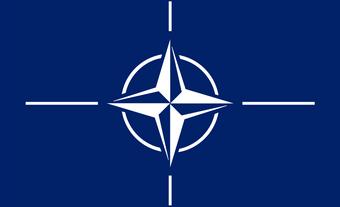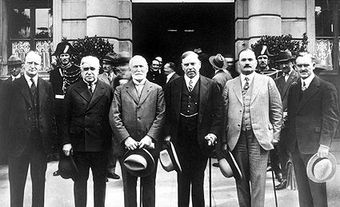The G7, or Group of Seven, is an international group comprising the governments of the world’s largest economies: Germany, France, Italy, Japan, the United Kingdom, the United States and Canada. It was founded as the G6 in 1975 and became the G7 with the addition of Canada in 1976. The Group is an informal bloc; it has no treaty or constitution and no permanent offices, staff or secretariat. The leaders of the member states meet at annual summits to discuss issues of mutual concern and to coordinate actions to address them. The meeting location and the organization’s presidency rotates among the members. The European Union is also a non-enumerated member, though it never assumes the rotating presidency.

Origins and Development
During the Cold War, the finance ministers of France, West Germany, the United Kingdom and the United States met in Washington in March 1973 at the suggestion of American treasury secretary George Shultz. The meeting allowed them to better understand shared problems and to coordinate their responses.
After the Washington meeting, French president Valéry Giscard d'Estaing and German chancellor Helmut Schmidt called for national leaders to meet on a regular basis. France hosted the first G6 meeting, which included Japan and Italy, at the Château de Rambouillet, France, on 15–17 November 1975. At the top of the agenda were the dramatic rise in world oil prices and the resulting global recession that had both been triggered by the actions of the Organization of Oil Producing Countries (OPEC) beginning in late 1973. It was also agreed at Rambouillet that the Group would meet annually. (See also Oil and Gas Policy in Canada, 1947–80.) The informal organization was dubbed the Group of Six or G6.
The 15-point Declaration of Rambouillet stated that the six countries had come together because of their “shared beliefs and shared responsibilities.” They promised to “intensify our cooperation on all these problems in the framework of existing institutions as well as in all the relevant international organizations.” The declaration stated the group’s support of multilateralism, free trade, and more cooperation among liberal democracies and with socialist countries.
Changes in Membership
When Canada was invited to join in 1976, the G6 became the G7. A year later, the European Community (now called the European Union) was invited to attend G7 summits. It joined as a non-enumerated member and never assumes the rotating presidency.
The Soviet Union (now Russia) began attending in 1989. Despite having a small economy compared to other members, Russia was invited to join the Group in 1997. This was done to help the country in its transition from communism to capitalism and to help it peacefully integrate in international affairs.
However, in 2014, Russia invaded and annexed Crimea, which was part of Ukraine. The other G8 members condemned the action and removed Russia from the group. The G8 was again the G7. At the 2018 and 2019 G7 summits, US president Donald Trump advocated for Russia’s return to the group. The other leaders refused, believing it would legitimize Russia’s aggressive actions.
Organization and Function
The G7 is an informal bloc. It has no treaty or constitution and no permanent offices, staff or secretariat. The leaders of the member states meet at annual summits to discuss issues of mutual concern and to coordinate actions to address them. The meeting location rotates among the members. The host country’s head of government acts as president. The president sets the agenda, after consultation with other members, and chairs the meeting. Every summit concludes with the release of a non-binding communiqué. It summarizes the issues discussed and the decisions made.
Between summits, G7 cabinet ministers consult on matters of mutual interest to coordinate research, implement communiqué goals, and develop ideas for future meetings. Cabinet ministers comprise G7 Ministerial Groups, which focus on issues such as the environment, trade, health and the digital economy.
Additional work is done between summits by G7 engagement groups. These are non-governmental organizations and civil society groups in all member countries who coordinate with each other. They develop policy ideas that they then try to have included in the next summit. G7 engagement groups have addressed issues related to women, youth, labour, science, climate change, trade and business.
G7 Summits in Canada
Canada has hosted six G7 summits: Ottawa-Montebello, Ontario-Quebec (1981); Toronto, Ontario (1988); Halifax, Nova Scotia (1995); Kananaskis, Alberta (2002); Muskoka, Ontario (2010); and Charlevoix, Quebec (2018). Through its G7 membership, Canada has advanced international discussion of issues that reflect its priorities and values. For example, at the 2018 G7 Charlevoix summit, Canadian efforts were instrumental in seeing $3.8 billion devoted to promoting education for women and girls in areas of crisis.
Protests
G7 efforts have reflected the growing international interdependence brought about by globalization. However, globalization has also inspired resistance and protests on the grounds that it has lowered environmental, labour and living standards. In 1998, approximately 70,000 protesters formed a human chain around the site of the G7 summit in Birmingham, England. In July 2001, 200,000 protesters gathered at the G7 meeting in Genoa, Italy. Confrontations between police and protesters led to many injuries and arrests. One protester was shot and killed.
The anti-globalization protests at G7 meetings mirrored the even more violent protests at other multilateral meetings: most notably the 1999 World Trade Organization (WTO) meeting in Seattle, the 2001 Summit of the Americas meeting in Quebec City, and the 2010 Group of 20 summit in Toronto. In response, G7 meetings began to be held with increased security in more remote areas away from city centres.
Criticism and Changes
Critics of the G7 note that when the bloc was formed in the mid-1970s, it represented 70 per cent of the world’s gross domestic product (GDP). As a result, members could speak and act with genuine authority on matters of international economics. However, that authority came under scrutiny as the development of non-G7 economies, especially that of China, shrunk the G7’s share of the global GDP to 50 per cent. To address that change, a larger group, called the G20 or Group of 20, was formed in 1999. It includes G7 members as well as many countries with developing and influential economies. The G20 also meets annually to discuss issues of international concern.
Critics have also observed that the G7 often fails to comply with the stated goals of its annual communiqués. In response, the G7 formed a Research Group in 1996. It publishes an annual evaluation of compliance. Since 2010, each member nation has also been expected to produce its own annual report outlining its compliance with G7 goals and pledges.
See also United Nations; Canada and the League of Nations; General Agreement on Tariffs and Trade (GATT); International Trade; Canada and the World Trade Organization; Canada and NAFTA; North Atlantic Treaty Organization (NATO).

 Share on Facebook
Share on Facebook Share on X
Share on X Share by Email
Share by Email Share on Google Classroom
Share on Google Classroom







